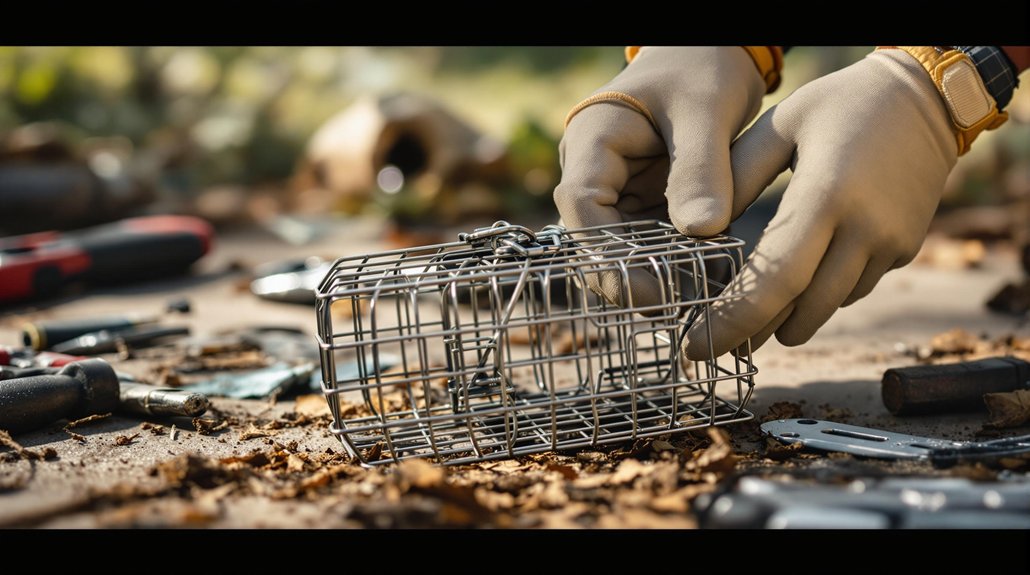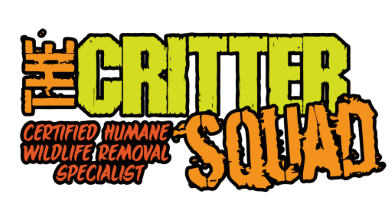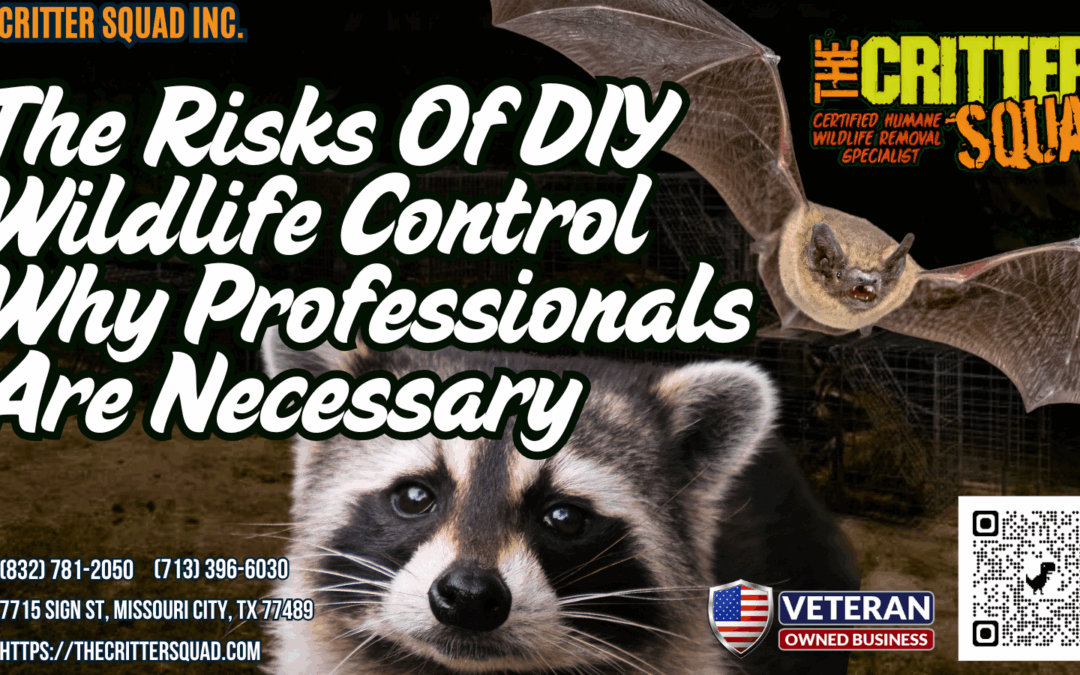DIY wildlife control can lead to serious risks. Misinterpreting animal behavior may cause harm to both wildlife and humans. Additionally, there’s a health hazard from potential zoonotic diseases. Legal regulations often require permits, which many DIYers overlook. Proper equipment and humane methods are vital, yet difficult to manage without training. Mistakes can lead to costly repairs and ongoing infestations. Professionals guarantee safe, effective solutions and prevent future issues. Discover more about why expert help is essential.
Key Article Highlights
- DIY wildlife control can lead to inadequate trapping, resulting in ongoing problems and potential property damage.
- Misinterpretation of animal behavior may increase the risk of zoonotic disease transmission through bites or contact.
- Lack of specialized tools and safety equipment raises health hazards for individuals attempting wildlife control without professional assistance.
- Ignoring local wildlife regulations during DIY efforts can result in legal complications and fines, complicating the control process.
- Professional services guarantee safe and humane methods, providing peace of mind and preventing future infestations effectively.
Understanding Wildlife Behavior
When individuals seek to control wildlife, understanding animal behavior is essential. Wildlife communication plays a significant role in how animals interact with each other and their environment. By observing these behaviors, one can gain insight into their instincts. Animals often respond to threats in predictable ways, driven by their natural instincts for survival. Recognizing these patterns can help people approach wildlife control more effectively. Additionally, understanding animal communication signals can inform safer and more effective removal strategies. Recognizing bat echolocation patterns can help in locating roosts and understanding their activity. However, misinterpretation of animal behavior can lead to poor decisions. Many do-it-yourself attempts ignore the complexities of wildlife communication, risking harm to both animals and humans. A respectful understanding of these instincts allows for safer and more humane control methods. For example, raccoon nesting habits can indicate when animals are preparing to raise young, which is crucial for timing humane removal efforts. Overall, knowledge of wildlife behavior is imperative for anyone considering wildlife management.
Health Hazards Associated With Wildlife
What health risks do wild animals pose to humans? Wild animals can carry diseases that are harmful to people. One major concern is disease transmission, which can occur through bites, scratches, or contact with animal waste. Zoonotic infections are diseases that jump from animals to humans. Examples include rabies, hantavirus, and leptospirosis. These infections can lead to serious health issues, sometimes requiring medical attention. People who attempt DIY wildlife control may underestimate these risks. Handling wild animals without proper training can increase the chance of exposure to these harmful pathogens. Additionally, rat nesting habits can lead to infestations that spread disease. Proper wildlife handling techniques are crucial to minimize health risks. It is essential to recognize that the safety of individuals and their families is at stake. Relying on professionals guarantees that wildlife is managed safely and effectively, reducing the risk of zoonotic disease transmission and ensuring proper rodent removal procedures are followed.
Legal Regulations and Compliance
Legal regulations play an important role in wildlife control. Local wildlife laws often require permits and licenses for certain activities. Understanding these rules is essential for anyone considering DIY wildlife control.
Local Wildlife Laws
How can individuals guarantee they are complying with local wildlife laws while managing animal issues? Understanding local regulations is essential for ensuring wildlife conservation. Ignoring these laws can lead to fines or further complications. To navigate local wildlife laws effectively, individuals should consider the following:
- Research local regulations: Know the specific laws in your area regarding wildlife.
- Consult local wildlife agencies: Reach out for guidance on proper procedures and practices.
- Stay informed about conservation efforts: Awareness of local conservation initiatives can aid in responsible management.
Permits and Licensing Requirements
While managing wildlife issues, individuals must often obtain the necessary permits and licenses to comply with local regulations. The permit acquisition process can be complex and varies by location. Many people may underestimate the importance of following these rules, thinking they can handle wildlife control independently. However, without the proper permits, individuals risk fines or legal action. The licensing process guarantees that only trained professionals handle certain species, protecting both the wildlife and the community. Ignoring these regulations may lead to unintended consequences. Consequently, it is crucial to understand and follow the legal requirements before attempting any wildlife control measures. Seeking professional help can simplify this process and guarantee compliance with all local wildlife laws.
The Importance of Proper Equipment
Proper equipment is essential for effective wildlife control. Specialized tools help in handling different animals safely and efficiently. Additionally, safety gear is necessary to protect individuals from potential harm during the process. Using humane bat removal methods and equipment ensures the safety of both the animals and the homeowners.
Specialized Tools Required
Using specialized tools is essential for effective wildlife control, as the right equipment can greatly enhance safety and efficiency. Without proper tools, DIY attempts may lead to injury or ineffective techniques that fail to resolve the problem. Professionals come equipped with specialized equipment designed for specific situations.
Some essential tools include:
- Traps: For humane capture of animals.
- Deterrents: To prevent wildlife from returning.
- Bait: To attract animals safely.
These tools guarantee that wildlife control is done correctly, minimizing risks to both the individual and the animals involved. In contrast, using makeshift or improper tools can complicate the situation. Investing in specialized equipment is key for anyone serious about effective wildlife management.
Safety Gear Necessity
When engaging in wildlife control, safety gear plays an essential role in protecting individuals from potential hazards. Proper personal protective equipment is critical to guarantee safety while handling animals or dealing with their droppings. This includes gloves, masks, and eye protection. Equipment selection should be based on the specific risks involved in the situation. For instance, thick gloves can prevent bites, while masks can guard against harmful germs. Using the right gear not only protects one’s health but also allows for a more confident approach to wildlife control. Ignoring safety gear can lead to serious injuries or illness. Therefore, prioritizing proper equipment is fundamental for anyone considering DIY wildlife control to maintain their freedom while safeguarding their safety.
Humaneness in Wildlife Control
How can wildlife control practices balance effectiveness with compassion? Professionals in wildlife control prioritize ethical considerations, ensuring that methods used are both efficient and humane. The use of humane traps is essential for minimizing suffering while managing wildlife populations. It is vital to take into account the following points:
- Humane traps capture animals without causing injury.
- Professionals understand local laws regarding wildlife treatment.
- Proper release methods are employed to give animals a chance to thrive.
Preventing Future Infestations

Although wildlife control is important, preventing future infestations is equally essential. To keep homes safe from unwanted animals, homeowners should consider habitat modification. This means changing the environment to make it less inviting for wildlife. For instance, removing food sources, like pet food or birdseed, can deter animals from entering yards.
Additionally, exclusion techniques are vital. This involves sealing gaps and holes in buildings to prevent animals from getting inside. Screens on vents and closing off entry points can be effective measures.
The Cost of DIY Mistakes
Preventing future infestations can save homeowners from the costs associated with wildlife control, but mistakes in DIY attempts can lead to even greater expenses. The cost implications of DIY mistakes can be significant, resulting in financial consequences that homeowners often do not anticipate.
Some common pitfalls include:
- Inadequate trapping: Failing to capture all animals can lead to ongoing problems.
- Property damage: Unsuccessful attempts can damage homes, leading to costly repairs.
- Health risks: Ignoring safety measures may result in health issues, incurring medical costs.
These mistakes not only add to the immediate financial burden but can also create long-term issues. Homeowners who overlook these risks may find themselves spending much more than they would have with professional help.
Peace of Mind With Professional Services
What can homeowners gain from hiring professional wildlife control services? They can find peace of mind knowing experts are handling the situation. Professionals bring expert knowledge that helps identify and solve wildlife problems effectively. This reduces stress for homeowners who may feel overwhelmed by the situation. With trained specialists, homeowners can trust that the methods used are safe and humane. Professionals also guarantee that wildlife is removed and that future issues are prevented, adding an extra layer of security. Homeowners can enjoy their space without the worry of uninvited guests. Overall, hiring professionals not only addresses immediate concerns but also promotes long-term comfort and safety in the home. This leads to a more relaxed and enjoyable living environment.
Frequently Asked Questions
What Are Common Signs of Wildlife Infestation in My Home?
Common signs of wildlife infestation include unusual noises, visible wildlife droppings, and discovered entry points. Homeowners should be alert to these indicators, as they can signal the presence of unwanted animals seeking shelter.
How Can I Identify Different Types of Wildlife in My Area?
To identify different types of wildlife, one can observe animal tracks, droppings, and nests. Researching local wildlife guides helps in animal identification, revealing species common to the area and fostering a deeper connection with nature.
Can DIY Wildlife Control Methods Harm Pets or Livestock?
“Curiosity killed the cat,” and in wildlife control, pet safety and livestock protection may be compromised. DIY methods can inadvertently harm animals, leading to dangerous situations. Caution is essential when considering these approaches to wildlife issues.
What Should I Do if I Encounter a Wild Animal?
When encountering wildlife, one should remain calm and keep a safe distance. Observing the animal quietly promotes safety for both the individual and the animal. Avoid approaching or attempting to touch the wild creature.
How Do I Know if My Area Requires a Wildlife Control Permit?
In the tangled web of nature, understanding wildlife regulations is key. To determine permit requirements, one must consult local authorities or online resources, ensuring compliance and harmony with the wild neighbors that share their space.




























